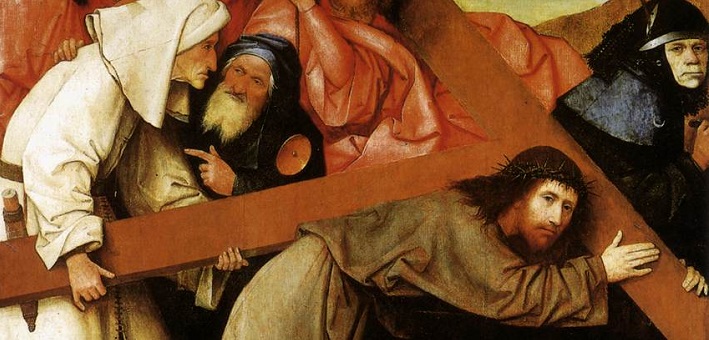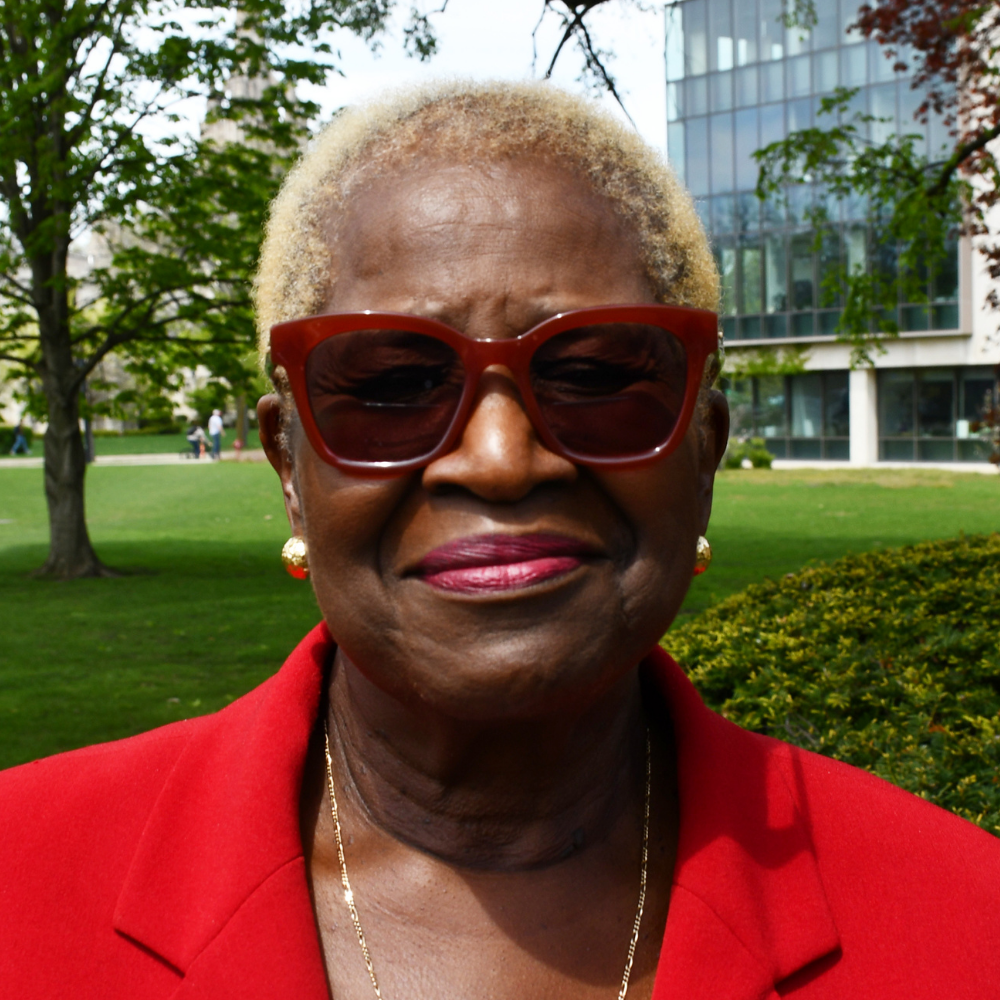Commentary on Matthew 27:11-54
There’s an inherent incongruity in the juxtaposition of this lengthy report of Jesus’ trial and crucifixion and the procession of the palms that may accompany its reading.
[If you are looking for a commentary on Matthew 21:1-11, please see this 2019 Palm Sunday commentary by Greg Carey.]
The reports in Matthew’s gospel of Jesus’ conflict with the chief priests and the elders culminates with his arrest and trial before Pilate, and ultimately his death at the hands of Roman officials. This gospel record presents a picture of Jewish religion that is restrictive and repressive. Daniel Migliore calls it “the dark side of religion,”1 and contrasts the positive aspects of Jesus’ ministry—the teaching, healing and works of compassion by Jesus and the responses of the common people, with that of “the official defenders of the faith and the law of Israel … who act as the prosecuting attorneys”2 at Jesus’ trial.
Yet, the chief priests and the elders cannot be made to shoulder the full blame for Jesus’ arrest, trial, conviction and death. Pilate, as the representative of the civil government under whose rule the people live an oppressed life, also bears responsibility for such a miscarriage of justice. He suspects, or even believes, that Jesus is innocent and is even warned by his wife about the possible consequences of being party to an unjust verdict against “that innocent man.” But he refuses to take a stand for justice and instead shifts the decision and the responsibility to the crowd. His questioning of the crowd is not a sincere attempt to see justice done. It is a scheme to pass the buck away from himself. It is a common practice in both church and society as responsibilities are passed from individuals to committees.
In the case of Jesus, the committee of the gathered crowd passes judgment without demurral of even those who might have benefitted from Jesus’ actions during his ministry among the people. It is an example of the evil and injustice that work to convict the innocent. Matthew does not name the disciples, but one wonders where they, or the crowds that had been healed, fed, taught or empowered by Jesus to overcome their troublesome life situations, might have been. The crowd is vocal and gives Pilate an “out,” an opportunity to wash his hands, even literally, and plead his own innocence.
Jesus pays the price, is condemned, mocked, and crucified, yet he remains silent. His only outbursts of sound are appeals made to God as the curtain closes on the scene. Along the way, instead of the acclamation that was the response to his entrance into Jerusalem, this crowd derides him for his claims as God’s son. And his divinity is recognized by a human voice only as nature proclaims the mystery of death being overcome by life as the tombs are opened and the once-dead are brought back to life.
This lengthy text seems incongruous applied to a day that is typically devoted to the celebration of Jesus’ triumphal entry into Jerusalem. For the worship service where it is presented, it offers an opportunity for the hearers to pass the blame for Jesus’ death to Pilate, to the temple authorities, or the crowd, as we who claim the name Christian in our day stand on the sidelines, certain that in real time, we would do better, be better, act better, in a way that shows us fully on the side of Jesus and ready and willing to proclaim his innocence loudly, regardless of the consequences.
On the other hand, it offers the preacher an opportunity to name our own collusion with the various groups then and now who act deliberately or in collusion with those who would victimize today’s innocent. In times past and even today in some circles, this text has been used to support anti-Semitic beliefs. Even without that extreme and erroneous interpretation, it may cause a sense of discomfort or guilt about times when we have been silent in the face of injustice, sided with the mob for our own protection, washed our hands to avoid our responsibility when a decision required that we stand against the crowd, or even that we waited until after the evil was done, before we took a stand for truth and justice.
As human beings we too often try to justify the wrongs we support and find ways to claim our innocence, dismissing the guilt and shirking the responsibility to do good as followers of Christ. The palms we wave should not be used to dispel the stench of evil that accompanies our collusion with those who seek to pervert justice and show their power over others. Instead, we must use them to call others to join with us in naming the wrongs and seeking justice for those who cannot or will not speak for themselves.
One may well ask why Jesus did not speak out on his own behalf. Jesus knows that the cross is his destiny. He knows that as Son of God he has the omnipotence of the divine. Yet he chooses not to exercise his divine power in the face of human wrong, because of his commitment to take our sins upon himself. And God seems silent also just when Jesus seems to need him most. Jesus breaks his silence only to cry out to God, seemingly in despair. “My God, my God, why have you forsaken me?” is too often our cry in the face of our own experiences of oppression and injustice when it seems that our cries go unheard and our appeals to God are unanswered. As we consider this text, we are called to recognize ourselves in all the human roles it portrays. In humility we must recognize the various places where we stand and ponder not simply what we would have done differently, but also what opportunities we are being given to seek justice in service to Christ for the building of the kin-dom on earth.
Notes
- Daniel L. Migliore, Matthew 27:11-26, Theological Perspective, in Feasting on the Gospels, Matthew. Volume 2 Chapters 14- 28, (Louisville, Kentucky: Westminster John Knox Press, 2013), p. 326.
- Migliore, 326.


April 2, 2023